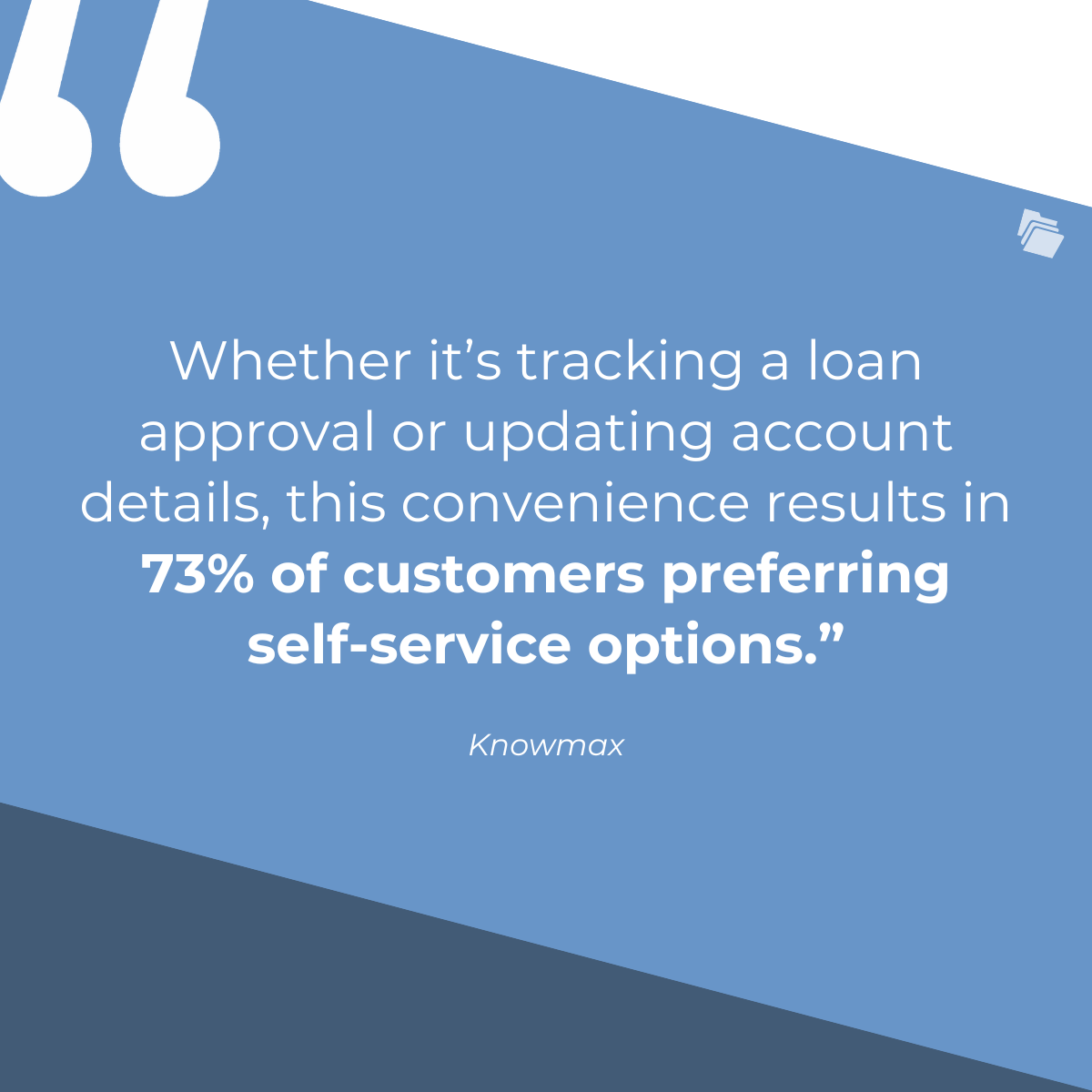The efficiency ratio is a critical banking metric that shows how much it costs to generate $1 in revenue. A lower ratio means greater operational efficiency.
As rising non-interest expenses pushed U.S. banks' efficiency ratios to 65.8% in late 2023 — a 10.9% year-over-year increase.
As a result, many financial institutions are under pressure to improve performance. With 80% of banks planning to increase technology spending over the next two years, thinking outside of the box will be essential to boosting efficiency. This blog explores five unique ways your bank can achieve a more competitive efficiency ratio.

Innovate to Accelerate: Smart Tactics for a Leaner, More Efficient Bank
Over the past few years, the global business environment has been shaped by unexpected challenges — from the pandemic to geopolitical conflicts and breakthroughs in generative AI. As such, thinking unconventionally about new, emerging challenges has become the baseline for sustainable success, rather than an afterthought.
The financial services sector is no exception. To turn around lagging efficiency ratios, banks must embrace creative, out-of-the-box solutions.
Here are five ways to start:
1. Leverage AI and Machine Learning to Boost Efficiency
AI adoption isn’t just a way to save costs — it’s now a competitive necessity. Recent studies show that AI-driven solutions can boost decision-making efficiency by 20% in financial services while cutting administrative overhead by up to 50%.
But how does this play out in real life?
In banking, tasks like loan processing, underwriting, and compliance reviews are often slow and error-prone. AI-driven automation transforms these processes, enabling banks to handle larger volumes of data with speed and accuracy. This frees up staff to focus on higher-value work.
Here’s how AI can enhance key banking functions:
A) Loan Processing
AI tools process loan applications and verify documents faster than humans.
B) Underwriting
Machine learning algorithms analyze a range of data — including credit history, employment status, and even social media activity — to assess risk quickly and accurately. This reduces underwriting time while improving decision accuracy.
C) Compliance
AI monitors regulatory changes and ensures compliance in real time by automatically updating internal policies and procedures. Predictive models reduce human error and increase compliance by up to 45%.
2. Redesign Workflows with Robotic Process Automation (RPA)
Robotic process automation (RPA) is revolutionizing banking by automating repetitive, low-value tasks, freeing up skilled employee hours for high-impact work. Studies show that around 60% of occupations could have at least 30% of their tasks automated through RPA. So, what tasks in financial services can benefit from automation?
A) Fraud Detection
RPA analyzes large data sets to spot suspicious activity, allowing real-time interventions and reducing false positives.
B) Know Your Customer (KYC)
RPA automates the extensive document verification and compliance steps required to satisfy KYC requirements. This significantly speeds up the customer onboarding while ensuring regulatory compliance. Major banks like Deutsche Bank and HSBC have already used RPA to streamline KYC processes.
C) Customer Onboarding
Automating data entry, form processing, and customer verifications allows banks to onboard customers faster, reducing abandonment rates and improving efficiency. This creates a secure and scalable process, allowing staff to focus on customer service.
3. Invest in Data-Driven Decision-Making Tools
In today's fast-paced banking environment, real-time data insights allow financial institutions to make faster, more informed decisions. By leveraging data-driven decision-making tools — known as decision support systems (DSSs) in banking — banks can process vast amounts of real-time information.
Generative AI, when combined with these insights, could add between $200 - $340 billion annually to banking profits largely through operational efficiency and personalized customer services. These tools unlock value by processing and interpreting the large volumes of data that financial institutions already possess but lack the resources to use in a timely fashion.
This potential comes from two key factors:
A) Real-Time Data
With instant access to customer data, financial institutions can execute faster, more accurate risk assessments. This reduces risks tied to loans, investments, and market fluctuations. Plus, these tools improve customer experience by analyzing transaction histories and behaviors to deliver tailored services.
B) Predictive Analytics
These tools can forecast operational bottlenecks and issues before they happen. AI-powered tools help banks predict fraud patterns or credit risks, enabling proactive measures that reduce manual reviews and defaulted loans. Investing in these technologies sharpens decision-making and streamlines operations.
4. Integrate a Self-Service Customer Portal
A self-service customer portal allows clients to perform various banking tasks on their own, anytime and anywhere. These tasks include:
- Uploading documents
- Checking loan statuses
- Managing accounts
By automating these tasks, banks cut down on labor costs while empowering customers to take control of their financial activities.
This shift to self-service also drives customer satisfaction. With a portal, customers can access information and services without waiting for support. Whether it’s tracking a loan approval or updating account details, this convenience results in 73% of customers preferring self-service options.
Additionally, self-service portals lower operational costs by reducing the need for customer service hours. As a result, banks can serve more customers at a lower cost, making self-service portals a win-win for both customer satisfaction and operational efficiency.
FileInvite offers a great example of how these portals work. Its secure platform lets customers seamlessly upload and manage documents. Automated notifications keep users updated on document status and loan progress.
The user-friendly portal provides secure access around the clock, allowing customers to submit and review required files at their convenience. This reduces the need for manual follow-ups and cuts down processing times, giving customers an efficient, streamlined experience. FileInvite also integrates with popular cloud storage services, allowing banks to offer a smooth, efficient document management process from start to finish.

5. Implement a Cloud-Based Document Collection System
Boosting your bank’s efficiency ratio involves removing bottlenecks in customer interactions — platforms like FileInvite offer an ideal solution. FileInvite streamlines document collection by automating requests and securely gathering files in one place. This reduces human error and the time spent tracking down missing paperwork.
With a centralized, cloud-based system, banks can manage multiple document requests at once, minimizing manual work.
FileInvite enhances your efficiency ratio in several ways. Automated document requests eliminate the need for back-and-forth emails, allowing staff to focus on client interaction and financial analysis. Real-time status updates notify both the bank and the customer when documents are submitted, preventing delays and ensuring deadlines are met. These time savings lower the cost per transaction.
Another key benefit is the platform's integration with tools such as Dropbox and Google Drive. This makes it easier to securely manage large volumes of documents, reducing the risk of lost or mishandled information.
Enhance Your Bank’s Efficiency Ratio with FileInvite
Implementing streamlined, automated systems is key to long-term growth in banking. Cloud-based document collection platforms like FileInvite can help your organization put these out-of-the-box strategies into action. By reducing manual tasks and enhancing efficiency, FileInvite allows your team to focus on higher-value work and better customer relationships.
If you’re looking to improve your bank’s efficiency ratio, consider how FileInvite simplifies document management and boosts compliance. Embracing these solutions now can lay the foundation for lasting growth in a competitive industry.
To learn more, request a demo at FileInvite today.

Related Posts: